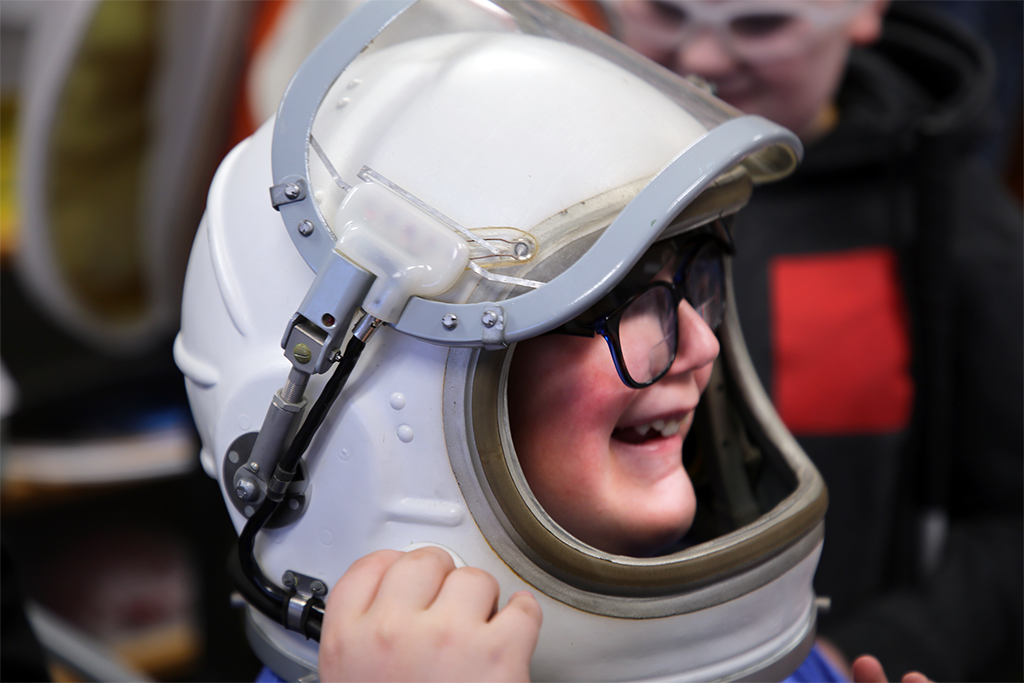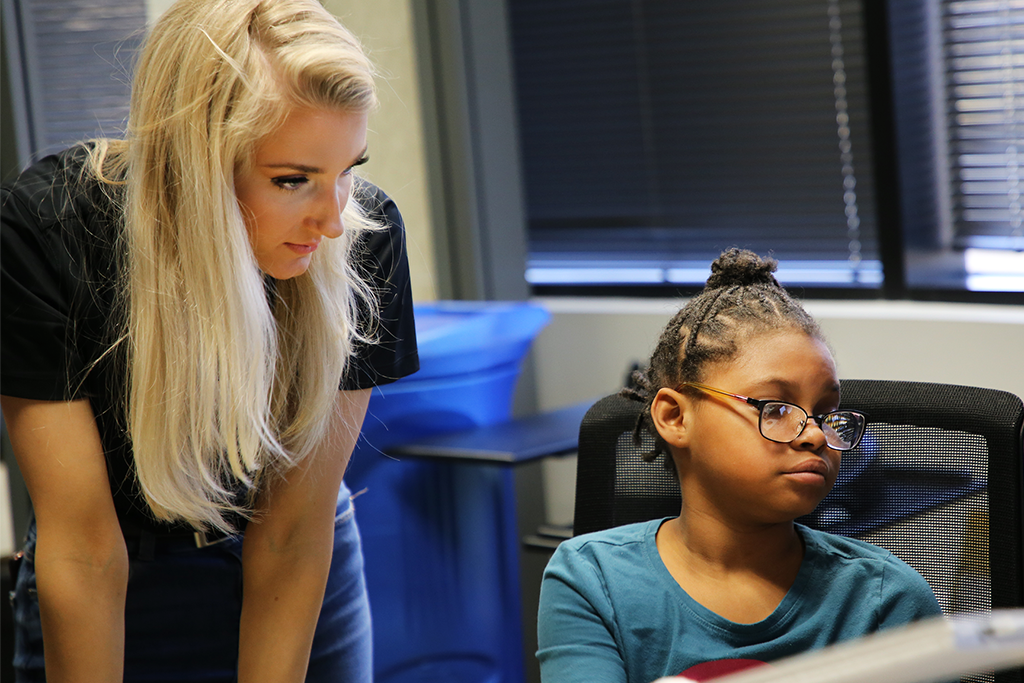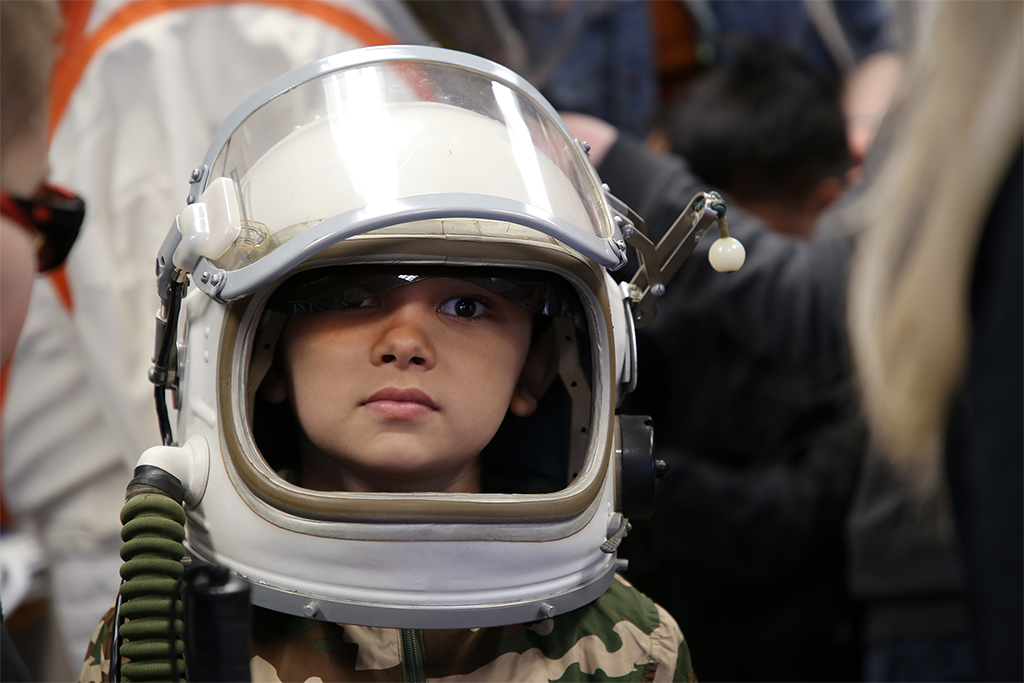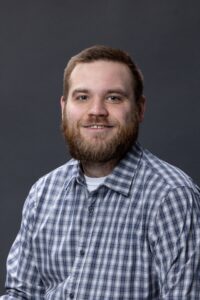Space Grant Consortium makes space for everyone
North Dakota NASA Space Grant Consortium invites students with visual impairments to explore space in new way

The NASA Space Grant Consortium, a nationwide effort started by NASA to increase interest and engagement in STEM and space studies in K-12 and university students, invited students with visual impairment from the North Dakota Vision Services/School for the Blind for a tour of the University’s comprehensive Space Studies facilities on May 1.
The North Dakota Space Grant Consortium, a part of NASA’s consortia, is housed in UND’s Clifford Hall and seeks to connect Space Studies students and faculty with NASA expertise and research.
Amanda Higginbotham, a commercial aviation student and NASA STEM ambassador with the consortium, said their primary interest is to get students involved with Space Studies.
“Our main goal here is to excite people about space,” Higginbotham said. “We’re trying to reach people from a variety of backgrounds, interests and education levels through after-school programs, campus visits and activities. The tours like we’re doing here today are definitely one of my favorite parts of what we do.”

Grace Heron, also an aviation student and NASA STEM ambassador, said the consortium places a lot of emphasis on expanding accessibility in Space Studies.
“The important thing for us with NASA is to promote diversity and accessibility for everyone in the field. There isn’t just one type of person who can get into Space Studies; we’re really trying to promote the idea that it’s for everyone.”
The visiting students were participating in a NDVS/SB’s Short-Term Programs five-day training session for elementary schools. The focus of the program is the Expanded Core Curriculum, a comprehensive plan to educate students in nine vision-related areas, including accessibility, technology, social interaction and career education.
UND alumna and NDVS/SB’s Student Program Coordinator Cindy Williams said that the organization’s programs offer students access to experiences tailored to them in a way their schools may not be able to provide.
“A lot of times in their home school or their local education agency, they’re the only ones with a visual impairment or blindness. The social aspect of it is really great for them, along with learning how to do things with vision loss that they may not have access to in their local school,” Williams said. “So, it’s important for them to get out in the community, and UND provided a really excellent opportunity for them to do that here.”
The consortium’s tour complimented the NDVS/SB’s mission by offering a wide range of interactive and exploratory activities and walking them through the intricate details of Space Studies.
For their part, the students seemed to enjoy the tour, as they were presented with various experiences ranging from an exploration of UND’s space shuttle simulators to time with braille workbooks that taught them about our solar system.
The space suit lab was a big hit with students; UND personnel in the space lab walked the students through the different components of space suits, showing them the different materials used and explaining how they’re designed specifically to keep astronauts safe.
The students were able to touch and hold the helmets and protective gloves of the suits for an up-close look at the materials and construction. Several students also got to try on the helmet, giving them a feel for what suiting up for space travel is really like.

Higginbotham, Heron and Cassandra Taggart took great care in setting up a tour that catered to the students’ needs to provide them with a fulfilling experience and foster their interest in space.
The consortium and students developed a tour that was equally enjoyable and educational, coordinating with aerospace labs and creating 3D constellation models so that students could get a truly holistic view of Space Studies.
Pipe cleaner constellations and solar eclipse models made out of construction paper and art supplies were passed around for students to study with their hands, all made by the Space Grant’s STEM ambassadors.
“We make lesson plans for things like today in-house,” Higginbotham said. “Most of the learning materials we’re using today were made by STEM ambassadors. I’ve done one other tour with NDVS/SB where I observed and made a cheat sheet of different things that would work. The rest was just making sure that we prepared everything so that the tour could be safe and successful.”

The tour’s sensory experiences offered something for every student. Some eagerly hopped into the shuttle simulation to get a taste of cramped space travel and investigate the feel of the simulator control panel’s switches and buttons, while others preferred the quiet inspection of textured pictures of planets in our solar system, complete with braille labeling.
No matter what the students gravitated toward, the experience surely left a lasting impression and planted the seeds of the world of space exploration in their young minds. Williams concurred that experiences like these are an important avenue to get these students interested in STEM.
“We have collaborated with the North Dakota Space Grant Consortium in the past as well, and they always do an excellent job of explaining things and giving the students hands-on and tactile experiences. It’s important for the students to have that firsthand experience, and UND always offers it in an accessible way,” Williams said.
The efforts made by the consortium and UND’s faculty and students to improve accessibility are an excellent stride toward capturing the imagination of students with diverse needs. By introducing them to the realm of space exploration, the consortium not only engages students in STEM-related activities but also fosters future leaders in the field. After all, space is for everyone.



